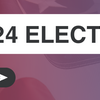
USA TODAY
Disclaimer: USA Today has partnered with AllSides and other bridging organizations, such as America Talks, to promote and support conversation events in which people on the left and right come together to bridge divides. This is work AllSides applauds and is a part of. This media bias rating page serves purely as an analysis of the bias of USA Today's news reporting; AllSides' bias analysis is independent, and partnerships with USA Today did not impact news bias analysis.
USA Today has published articles about AllSides' work, including:
USA Today has also published op-eds written by AllSides staff, including:
- Here's how technology can help reduce political polarization (Jan. 2020, CEO John Gable and Head Editor Henry A. Brechter)
- Political incivility is at crisis point in America. Here's how we can fix it (Nov. 2020, Brechter and COO Stephanie Bond).
- What Bruce Springsteen's Super Bowl ad gets right about reuniting Americans in 'the middle (Feb. 2021, Brechter)
NEW YORK (AP) — Wall Street roared Wednesday after inflation cooled more than expected last month, sparking speculation the Federal Reserve may not have to be as aggressive about hiking interest rates as feared.
The S&P 500 was 1.6% higher amid a widespread rally that took off immediately after a report showed the nation's biggest economic challenge, inflation, slowed to 8.5% at the consumer level last month from 9.1% in June. Technology stocks, cryptocurrencies and other investments that have been the year's biggest losers due to the Fed’s aggressive rate hikes were some of the morning's biggest winners.
The Nasdaq composite, which is full of the high-growth and expensive-looking stocks that have been particularly vulnerable to moves in interest rates, was 2.1% higher, as of 10 a.m. Eastern time. Bitcoin rose 4% to top $24,000, and the Dow Jones Industrial Average was up 430 points, or 1.5%, at 33,268.
Falling gas prices contribute to lower inflation
Much of July’s slowdown in inflation was due to drops in prices for gasoline and oil. But even after ignoring those and prices for food, which can also swing sharply from month to month, what’s called “core inflation” held steady last month instead of accelerating as economists had forecast.
The data encouraged traders to scale back bets for how much the Fed will raise interest rates at its next meeting. They now see a hike of a half percentage point as the most likely outcome, according to CME Group. A day earlier, they were betting on a hike of 0.75 percentage points, the same as the last two increases.
Such differences may not sound like much, but interest rates help set where prices go across financial markets. And higher rates tend to pull down prices for everything from stocks to commodities to crypto.
Prices for bonds soared immediately after the inflation report’s release, pulling their yields lower. The yield on the two-year Treasury, which tends to track expectations for the Fed, fell to 3.12% from 3.27% late Tuesday.
The 10-year yield fell more slowly, down to 2.72% from 2.78%, narrowing how far below it is the two-year yield. Many investors see such a gap as a fairly reliable signal of a coming recession.
Recession fears linger
Recession worries have built as the highest inflation in 40 years squeezes households and corporations around the world. The Fed and other central banks have been hiking rates to slow the economy in hopes of stamping out inflation, but they risk choking it off if they move too aggressively.
To be sure, inflation is still high, and the expectation is for it to stay so for a while. But Wednesday's encouraging data nevertheless rejuvenated Wall Street, which staggered following a stronger-than-expected jobs report on Friday that raised expectations for a more aggressive Fed. It bolstered hopes that a peak in inflation — and thus in the Federal Reserve's most aggressive rate hikes — may be on the horizon.











